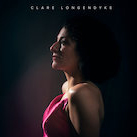

Clare Longendyke: … of dreams unveiled
Clare Longendyke
Clare Longendyke is an exceptional musician, but she's also a conceptualist of originality and imagination, something borne out wonderfully by her solo piano debut album …of dreams unveiled. As she explains in detailed liner notes, she could have created a recording exclusively featuring Debussy's Préludes, considering that she's luxuriated in the French composer's music for many years. But rather than add to the legion of versions already available, she chose to couple selections from its two books with others by Amy Williams (b. 1969) and Anthony R. Green (b.1984) and then thoughtfully grouped the twenty pieces into seven sub-sections. In doing so, contrasts are amplified and commonalities accented; most importantly, the juxtapositions strip away the familiarity of Debussy's Préludes and allow these lyrical vignettes to be heard afresh, refracted as they are by their partners in this bold presentation.
Longendyke brings the requisite sensitivity of touch and timing to Debussy, the result lustrous treatments rich in nuance, texture, and shape. While her virtuosity is often called upon, her energies are primarily directed towards crafting painterly, well-rounded evocations. As different as the three composers' works are, they complement one another, due in no small part to the judicious combinations Longendyke devised. That's a reflection of her approach in general, which sees her engaging with composers of the past whilst also dedicating herself to those of the present. To that end, she's an avid commissioner of new solo and chamber music pieces and an unenthusiastic champion of living composers. While Longendyke earned her Master's and Doctor of Music degrees at the Indiana University Jacobs School of Music, her connection to the music of Debussy and Ravel has no doubt been enhanced by a stint studying in Paris at the École Normale de Musique.
As is often the case, the album's final form arrived circuitously. After planning on presenting both books of Williams's Piano Portraits (the second set commissioned by the pianist), Longendyke asked the composer to weigh in on what else might be featured on the release. Without hesitation, her colleague suggested Debussy, and when the pianist's mom noted how effectively his Préludes complement Williams's portraits, the pianist's choice was made. Bringing in Debussy-inspired material by Green added an enticing third voice to the project, even if only two pieces by him appear on the release compared to six by Williams and twelve by Debussy.
A dynamic rendering of his picturesque, at times cryptic “La Cathédrale engloutie” sets a deeply atmospheric tone, after which Williams's iridescent “Olga,” named for her maternal grandmother (composed in 2019-20, the parts of Piano Portraits are titled after influential people in the composer's life), presents a luminous homage marked by vitality, curiosity, and wonder. While the quintessentially Debussy-esque “Voiles” muses ruminatively, Williams's “Yvar,” written with her graduate school piano teacher, Yvar Mikhashoff, in mind, undergirds single-note accents and clusters with low-register, percussive rumblings. The “mini-program” is completed by the familiar strains of “Les sons et les parfums tournent dans l'air du soir,” the aromatic hush of Debussy's conception alluringly expressed by the pianist.
The French composer's sparkling “Les collines d'Anacapri” is delivered vivaciously, after which Williams's “Frieda” (titled after her high school piano teacher) scampers across the keyboard like bewildered mice. Mischievous too is Debussy's “La danse de Puck,” which arrests for its wedding of classical gestures with rhythmic flourishes that suggest blues and jazz (a similar hint surfaces during the later “La puerta del Vino”). The fourth sub-set switches the order up in framing the delicate poetry of his “Des pas sur la neige” with Williams's sparse, somewhat Feldman-esque “Nils” and Green's 2022 response to Debussy, “Fugue – suivant ‘Des pas sur la neige.'” Rather than perpetuate the hush of his precursor's setting, Green's serves up a tempest of dazzling swirl. The mist which enshrouds Debussy's “Brouillards,” by comparison, remains in place for Williams's diaphanous “Helena” and the regal mystery of his “Canope.” In such a trio, the overlap between the composers' material is strongly felt.
While “Helena” references Helena Bugallo, Williams's long-time piano duo partner, the final portrait, the impish, impetuous “Ursula,” pays tribute to one of her modern piano heroines, Ursula Oppens. The recording concludes provocatively with Green's combustible “To Anacreon in the US,” which functions as a postlude to Debussy's “Feux d'artifice.” While the latter's fireworks evocation references “La Marseillaise,” Green's uses the American national anthem as source material for his volcanic meditation. In every subset, the eloquence of Debussy's writing is enriched by the adventurous imaginings of the others. While two pieces by Green appear on …of dreams unveiled, a third forms part of the set-list for Longendyke's follow-up, scheduled for release in 2025 or 2026. On that collection, Green's “Fugue – suivant ‘Minstrels'” will appear as a postlude to Debussy's “Minstrels,” just as “Fugue – suivant ‘Des pas sur la neige'” follows “Des pas sur la neige” on the current one. Expectations are high in light of the musical splendour achieved on this accomplished first collection.March 2024